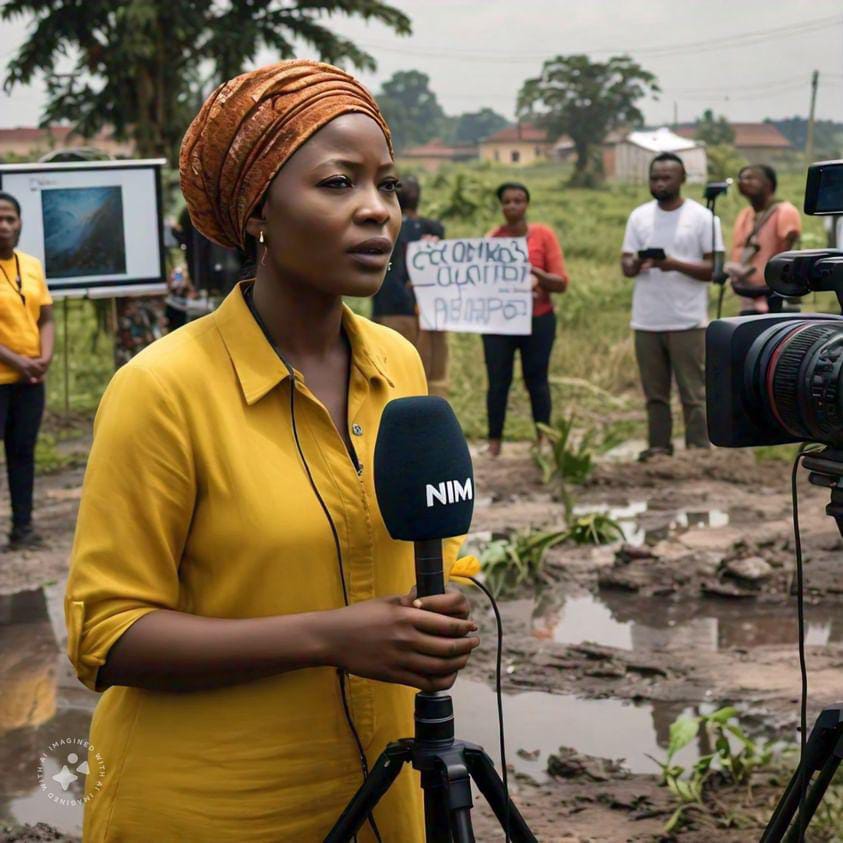By Rukayat Fatai
Climate change is no longer a distant threat; it is a present reality that impacts communities across the globe. From the rising sea levels affecting coastal communities in Lagos to the devastating wildfires in Canada and Australia, the signs are undeniable. As a global challenge, climate change demands a unified response, and storytelling has become a powerful tool in shaping that response.
Through compelling narratives, we can humanize the science, cut through the noise of climate debates, and inspire individuals, communities, and policymakers to take meaningful action.
In Nigeria, a country already grappling with severe environmental issues like desertification in the north and flooding, telling the stories of those on the front lines is crucial. It provides a platform for marginalised voices, amplifies the urgency of the crisis, and helps translate the often complex, technical language of climate science into relatable, actionable insights.
Effective storytelling for climate change action involves more than just reporting facts and figures; it taps into the lived experiences of people directly affected by climate impacts.
By using localised and relatable storytelling, we can raise awareness, drive collective action, inspire individuals, organizations, and governments to take the necessary steps toward mitigating climate change and adapting to its impacts.
Here are ways to harness storytelling to elicit actions against climate change:
1. Humanise your story
Stories are always more impactful when we center them on real people. When you share the journey of a fisherman struggling with warming oceans or a farmer navigating unpredictable seasons, it’s no longer just a figure, it is now a life impacted. When we see the faces, hear the voices, and feel the struggles of others, we’re more likely to care. Humanizing the story makes climate change not just about numbers, but about real lives and communities, making it feel more relevant and urgent. This brings about empathy generation to those reading and the ability to feel the tone in the story you are telling.
2. Focus on lived experiences
Nothing makes climate change feel more real than hearing directly from those who experience it every day. A family sharing their story of being displaced by flooding, or a community leader discussing how droughts have changed their way of life, brings an authenticity that statistics can’t capture. When we focus on these personal experiences, the crisis becomes less distant, pulling audiences in and helping them see climate change through the eyes of others. Sometimes what the readers want to see is those who experience it. There is a lot of information about different climate change and problems and that can be draining, however, when it’s coming from the perspective of someone who experienced it, it makes it easy to get people to read.
3. Use a solution-based angle
It’s easy to feel overwhelmed by the scale of climate change, but stories focused on solutions can bring hope. Highlighting a community that switched to renewable energy or a neighborhood that organized a clean-up brings a sense of possibility. When people see others making a difference, they realize that change is possible and that they, too, can be part of the solution. Solution-focused storytelling gives people something to hold onto. Your stories should sometimes not just give details of problems, the society needs suggested solutions that could help their imaginations and many times, people are searching for solutions with their search metrics not the problems.
4. Situate stories within a local context
Climate change affects different places in different ways. By grounding stories in a specific town, region, or even neighborhood, we can show how climate change is affecting our own communities. This makes it easier for people to understand the relevance of climate action in their own lives. A story about a town dealing with water shortages, for instance, resonates more with people who live there, as it speaks directly to their shared experiences and everyday realities. You don’t talk about tsunami to a Nigerian, they can’t relate absolutely. It takes someone in countries where a tsunami has been experienced to relate well.
5. Create urgency but balance with actionable solutions
Creating a sense of urgency is important, but we also want people to feel empowered, not helpless. Stories should convey the need to act now, while also showing that there are things we can all do to make a difference. By balancing urgency with practical solutions, we help people feel that they’re not just bystanders; they have a part to play. A lot of stories tend to talk about the government coming to people’s aid but DIY is something that people would love to have an idea of. It is no longer the era where people wait on the government, everyone wants to feel useful.Ending a story with a clear path to action motivates people to take that first step, rather than feeling overwhelmed.
6. The 5Cs (clear, concise, cohesive, concrete, complete)
Good storytelling is about making the message accessible and memorable. Stories should be clear and free of jargon, concise enough to hold attention, cohesive so that each part fits together, concrete with specific examples, and complete so people leave with a full understanding. A well-structured story, using the 5C’s, invites the audience in and keeps them engaged from start to finish. Reading is not that much of a fun for some people especially on topics like climate change, if you would want them to read, presentation matters and that can only be achieved using the 5C’s. Think about it, how does it feel reading a page filled with jargon, no proper spacing, unnecessary information and long texts.
7. Use visuals
Images and videos make climate change come alive in ways that words alone cannot. A photo of a dried-up lake or a video of a flooded street can make the issue more immediate, drawing the audience in visually. Visuals don’t just support the story, they deepen it, creating an emotional connection that makes people more likely to remember and act on the message. Visual helps in attention retention. With visuals, images are built up in the reader’s mind making it easier to feel and understand what the story is talking about. It also creates colourful, presentable, peeks curiosity to read more and brings up a sense of belonging.
8. Tell and show the actions to take
A powerful story ends with a call to action, showing people exactly what they can do. It might be as simple as reducing waste or supporting policies for cleaner energy, but giving audiences specific, achievable steps makes all the difference. When they know how they can contribute, they’re more likely to take that step toward positive change. Even an advertisement copy will end with a call to action. Aquaworld is an organization that is doing well in saving waterlife and sharing actionable steps to stop unnecessary dirts in the oceans. These are ways to put an end to climate change that can be shared.
Climate storytelling is more than just sharing facts, it’s about creating connections, motivating action, and showing people they’re not alone in this. When we create a sense of belonging with a clear message and great visual, we turn awareness into action. These strategies help us not only tell climate stories but build a movement where each person feels they have a role in creating a better society fulfilling SDG GOAL 13.









